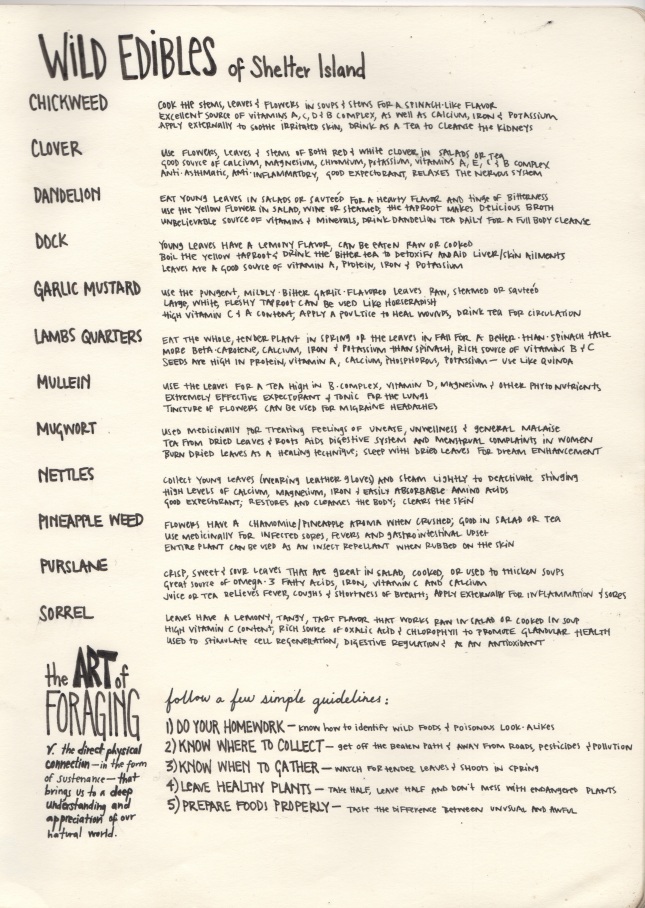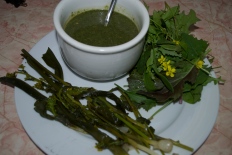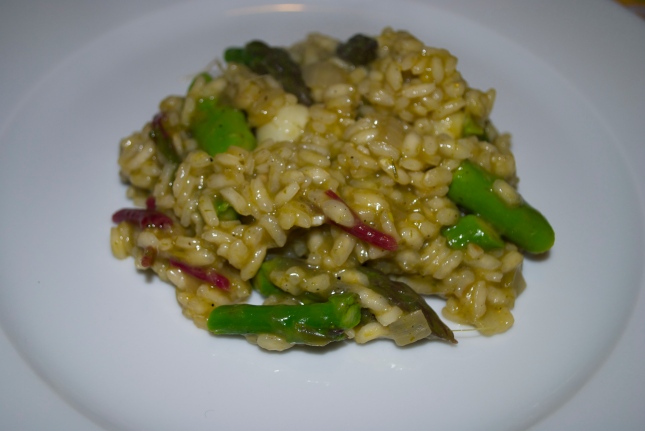
Kale (Toscano, Red Russian, Rainbow Lacinata), Spinach (Bordeaux, Tyee), Radishes (Easter Egg, Pink Beauty, Rudolf), Lemon Balm, Sheep Sorrel, Lamb’s Quarter, Fennel, Broccoli Rabe, Chives, Scallions
Well for one, just look at that basket of green goodness! Don’t tell me you’d rather join the crowds at the “super”market to get produce that’s been sitting in a refrigerated truck for a week and sprayed with who knows what to stay “fresh.”
Beyond the beauty of the bounty, there are plenty of other reasons for buying into a CSA (Community-Supported Agriculture).
1) It benefits you: you’ll be eating fresh food, with amazing flavor and nutritional benefits not found in grocery store produce. You’ll also be exposed to new, seasonal vegetables and new ways of cooking.
2) It benefits your community: interact with other food-minded members of your neighborhood, and the people who are actually growing your food! At Sylvester Manor, our CSA members have the opportunity to work on the farm in exchange for a cost reduction. We also donate extra produce to schools and food banks in the area.
3) It benefits the farmer: each CSA share is someone in the community saying “I trust you!” You give the farmer a cash advance, so they can have up front capital to use the non-growing season to plan, buy seeds, prepare land, and not worry about the lack of cash flow.
So why doesn’t everyone do this?
It’s expensive: Consider the true cost of food. The locally, sustainably, seasonally grown produce from a farm is just that. It’s priced based on the cost of seeds, land and labor. Industrial scale organic or conventionally grown food is not usually priced as accurately. Not even counting their pesticide-laden, toxic nature, consumers pay for this food outside of the grocery checkout line through tax payments (subsidies), massive environmental damage and growing health problems. I could keep ranting, but feel free to read more.
It’s inconvenient: What is? Going to a one-stop shop to pick up your weekly produce? And not having to be surrounded by 40,000 products, sale signs, and fluorescent lights? You can probably find a CSA that will deliver to you, or that you can pick up at a farmer’s market near you.
It’s low quality: Sure, you might get some veggies with dirt or a few bugs, some cracks or irregular shapes – these are indications that your food was, ya know, grown for flavor, not just looks or yield or shelf life or packaging. Someone planted that seed, watered it, transplanted it into the ground, and that plant was subject to the elements of nature. I bet if you close your eyes and taste a radish out of the field, and then a radish from Whole Foods, you’ll understand what quality means.
It’s not food I want (no choice, dislike vegetables, can’t we have tomatoes in May?): What if you view it as a chance to try out new foods, new cooking styles? Learn to be ingredient-driven, eat produce that is in season and be creative to overcome psychological blocks you have toward certain foods.
And if you’re a part of the Sylvester Manor community (and I’m sure a lot of other CSAs), we love to talk about food, share recipes, and offer suggestions for how to use what we give you. Here’s what we gave our CSA members for their first share this week:
Food has such power to bring individuals and entire communities together. Of course, a CSA is not the only way to get involved, but it’s a nice start.
Never doubt that a small group of thoughtful, committed citizens can change the world. Indeed, it’s the only thing that ever has. Margaret Mead










